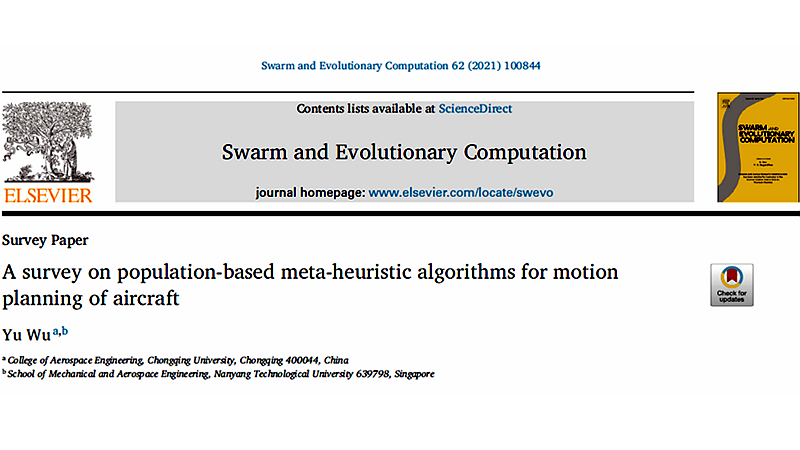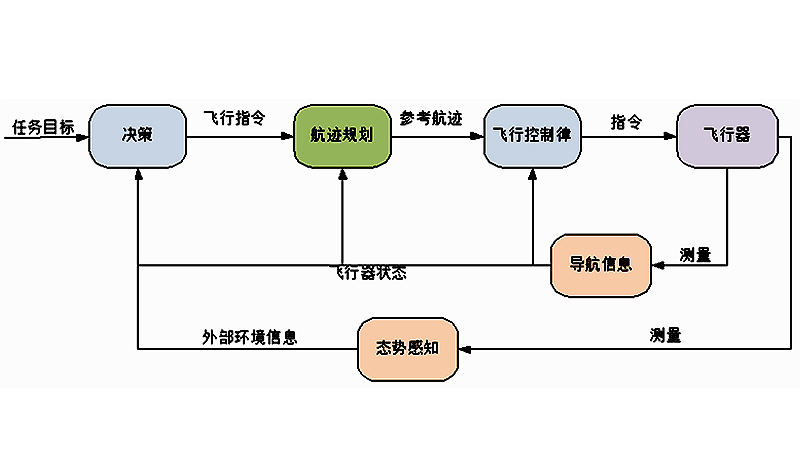Recently, Young Teacher Wu Yu of the School of Aerospace Engineering of Chongqing University published a review paper titled “A survey on population- d -heuristic algorithms for motion planning of aircraft” in Swarm and Evolutionary Computation (a top journal of Computer Science Zone 1 according to the Chinese Academy of Sciences, with factor of influence of 6.912). Mr. Wu Yu is the only author of the paper.

This paper systematically summarizes the application of population-d-heuristic algorithms (PMH) in aircraft motion planning problem since 2005. This paper also puts forward instructive recommendations on the challenges facing AMP problems, the way to select a proper PMH algorithm to specific AMP problems, future research directions of AMP problems and PMH algorithm and other important frontier issues.
AMP problem refers to planning of a path from the beginning point to the end point for the aircraft in order to achieve a certain goal, considering a variety of complex constraints (aircraft, mission, and environment). This problem plays an important role in aviation and astronautics, navigation, guidance and control, and is an indispensable part in the process of aircraft design and use, flight driving training, autonomous intelligent flight and so on, as shown in Figure 1 and Figure 2.

Fig. 1 The Role of AMP Problem in Aerospace Discipline

Fig. 2 The Role of AMP Problem in Navigation, Guidance and Control
AMP problem is a kind of optimization problem. PMH algorithm is a kind of heuristic optimization algorithm which simulates natural and social phenomena and biological behavior. It is very suitable for solving large-scale programming, nonlinear and strongly constrained optimization problems including AMP problem. In recent years, it has been widely used to solve various AMP problems. However, there has been no common research on PMH algorithm applied to AMP problem and this is also the starting point of this review.
The main research direction of Mr. Wu is flight dynamics modeling and path planning of aircraft, and cooperative control and mission planning of aircraft. He has been committed to the research of various PMH algorithms for a long time, and has formed a set of aircraft path planning methods based on intelligent optimization theory, with the characteristics of the aircraft taken into consideration. This review paper is a phased summary of the research work in this direction, and also prospects for future research.
Link of the paper:https://www.sciencedirect.com/science/article/pii/S2210650221000055
